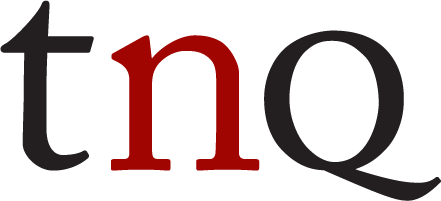Welcome to this Issue
Our idea of visual storytelling is based on the belief that “the truth” is self-evident, that it is simply revealed for us to witness, acknowledge, assess. We tend to believe in what our eyes tell us to be true. Here the skeptics might chime in and talk about photo editing or image manipulation, and of course the “artist” known as AI. So, is seeing really believing?
One of the more recent discoveries I’ve made is conservation photography, a form of visual storytelling that advocates for environmental and cultural protection. I came across the work of Christina Mittermeier, our cover artist for this issue, through the documentary Photographers. Mittermeier founded the International League of Conservation Photographers and actually coined the phrase conversation photography. Her work begins with a search for beauty, yet is informed by her background as a micro biologist; the results are breathtaking.
Had I seen the cover image before understanding the work of Mittermeier I might have challenged its authenticity. I might have argued that the perspective was overplayed, unreal even, and that the image had been manipulated for effect. But having seen the research, the technique, and passion Mittermeier brings to her work I have all the proof I need. I can visualize her in the ocean, her camera mounted on some apparatus, allowing her to maneuver with ease, almost touching her subject.
This is the kind of necessary but invisible evidence that might be a challenge to the scientists, engineers, activists, medical professionals and others who have come together here to explore whose truth it is anyway.
This issue has been almost a year in the making. It began with securing a grant from the Good Foundation, and we are incredibly grateful for their belief in our idea of asking writers to write about the question of why many people have a distrust in science? In some instances the responses give further context, while others offer explanations of how and why it’s an issue. The overall result is a collection of work that will help bring clarity and understanding to the topic. My hope is that it will spark some response from you, be it curiosity, outrage, or optimism. As with any good writing, the intention ultimately is to make you feel, to make you think.
In nonfiction we have “The Snow Bunting,” an essay by Helen Humphreys on our tendency to shape nature’s narrative, “A Conversation with the Trees of the West Island of Ontario Place” by Claire Cameron highlights the devastating effect of the recent cutting of 865 trees. In “Finding the Fire,” Dane De Souza reminds us of the Indigenous practice of creating good fire to prevent bad fire. Erin Bow returns to our pages with “Stories and Extinctions” about the dubious “conservation practices” that resulted in the decline of the buffalo. Her poem “The Dodo Returns” accompanies the essay. Holly Hogan combines her work as writer and seabird biologist on the impact of climate change on oceans in “Angels and Demons: The Musical,” and Trent Lewin challenges our dependency on oil in “The Last Barrel.”
Russell Smith takes on the fear of AI in the publishing industry in “‘And I, for one, welcome our new robot overlords’: Fear of Science in the Arts,” while Vincent Anioke likens the computations of finite automata with how we operate as humans in “Finite Automata.” In “The Reluctant Cyborg: On Disability, Science, and Technology,” Adam Pottle illuminates on how technology is as much a barrier as a bridge for those in the disability community. And Ronna Bloom reflects on how trust factored into her role as poet-in-residence in “The Needs of Strangers.”
In fiction, David Huebert brings us “Harbourers,” a foray into the world of right whales that face extinction due to fishing gear entanglement and strikes by vessels. In “Cli-Fi,” Cate Sandilands uses climate fiction as a way of combatting the impact of climate change. Paola Ferrante has brought us ghosts and ChatGPT in “A Residual Haunting of the LLM.” Christy Ann Conlin writes about medical distrust in “Displacement of Bodies in Time,” and Margaret Nowaczyk continues the theme, focusing on misinformation among pregnant women. In “A Complicated Regard: Five Cantos on Trust and Birthing,” Monica Kidd, a medical doctor and writer, tells stories from experience of trust and distrust. Kasia Jaronczyk weaves together her background in science and the influence of alternative medicine in “One, Two, Three, Close Your Eyes,” and Vincent Lam breaks down the issues surrounding the opioid crisis in “Never So Tidy.”
In addition, Lara El Mekaui interviews Tasneem Jamal on how quantum physics informed her book I Never Said I was Brave. And Jan Zwicky takes a philosophical approach to the wide-ranging exploration of truth itself in her essay “Hard Truths”.
“The Ag Show” is a prose poem/essay where Laurie D. Grahams illustrates the changes that have occurred in the agriculture industry, not only with new implements but a new language. Madhur Anand has written the found poem “Underlying Facts (making connections with dotted lines)” using words from a scientific article. In “Optics” Sneha Madhavan-Reese writes about a science that explains how we see things, while in Jennifer Cassidy’s “first words” the idea of a viable pregnancy is explored.
The documentary that introduced me to the work of Christina Mittermeier is one of the most joyful things I’ve watched in a while. Of course, the doubters might say that the documentary itself can be a form of propaganda, that I am being swayed in Mittermeier’s direction, her truth. But I would ask how far we want to take this cynicism, this lack of trust, when there is empirical evidence to counter it. We are not machines, after all.
—Pamela Mulloy
Read more

